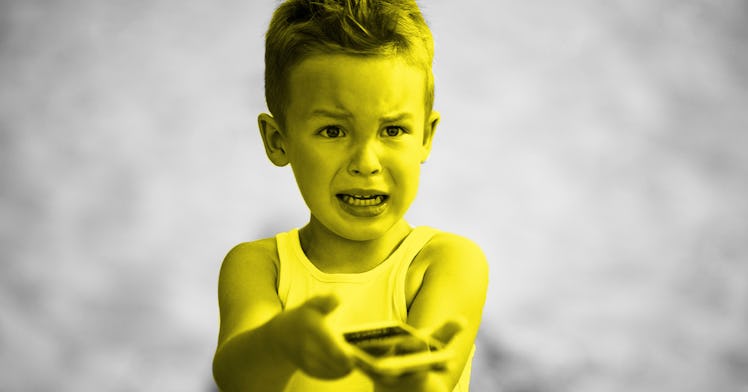There’s Nothing Funny About Scaring Kids With Instagram Filters
Parents are using social filters to frighten kids and make them cry. It's uncool and unhealthy.

A new TikTok trend is causing toddlers to freak out as they watch their parents’ faces morph into horses. Parents are filming their children’s reaction to observing the transformation as it happens in real-time on a phone screen and posting the videos for social clout. The children’s reactions are often extreme, including frightened tears. It’s an odd form of entertainment if that’s even the right word. A better word might be “traumatic.”
Importantly, Kamala London, Ph.D., a professor of psychology at the University of Toledo who specializes in forensic developmental psychology, notes that a toddler’s mind isn’t prepared for these kinds of images. And the fear they experience in these made-for-TikTok moments can have a distinct effect on their developing minds.
When Can Toddlers Tell That Digital Images Aren’t Real?
One characteristic that separates the human mind from those of other creatures is the ability to learn through symbols and symbolic artifacts. That’s what makes it possible to assemble a futon with a wordless diagram or follow the navigation app on a cell phone. And human kids develop this ability easily. But there’s a catch: “Understanding video images requires more prolonged development, and understanding the representational nature of videos requires even more learning and experience,” London explains.
As infants mature, their understanding that videos are different from events happening in person shifts significantly. “They smile more at the real person,” London says. “At the same time, infants often respond to videos as if they are real. For example, at nine months, infants still attempt to reach a screen to grab an object shown on a video. And by 15 months, children stop reaching for objects on a video screen.”
As technology advances, the realism of images becomes a complicating factor. One thing that makes artificial images and augmentations in social media apps so enthralling is that they appear lifelike. But it also makes it all the more confusing for young kids.
So even after a child can start to understand the difference between an actual image and a fake image, they can still show a fear response much like an adult might when they are watching a horror movie. A startle or frightening change can engage the brainstem instantly, igniting fight, flight, or freeze responses. Some adults enjoy the adrenaline rush, so seek out entertainment options that elicit such a reaction. But it’s not at all fair to force that on a little kid for kicks.
The Long-Term Effects of Scaring Little Kids for Fun
Humans tend to hold onto scary experiences. “This is likely evolutionarily adaptive and helps us avoid dangerous situations,” London explains. She points specifically to The Little Albert experiment, showing empirical evidence of classical conditioning in humans from researchers at Johns Hopkins in the 1950s. Foundational? Yes. But it was also pretty harrowing and wouldn’t pass muster in the research community today.
“Psychologists trained ‘Little Albert’ to fear rats by pairing a loud noise with the rat,” says London. “Whereas Albert initially showed no fear of rats, after having the rat paired with the loud scary noise, Albert began to cry upon seeing a rat. Five days later, Little Albert still showed an intense fear of rats but also generalized his fear to other furry things like the family dog.”
Granted, London points out that a single instance of scaring a small child with a social media filter is unlikely to lead to long-term fear — one data point isn’t enough to develop a conditioned response. But she is concerned about what kids learn about their ability to trust their parents and rely on them for safety during this crucial developmental period.
“The adult is like the mother (or father) sheep, and the toddler is like the baby sheep. The toddler should be able to explore and look to the adult for security. They count on the adult to protect them,” says London. “Giving the toddler a screen and allowing them to get frightened by the scary video is a violation of the toddler’s trust.”
And that’s before we even consider the violation of consent and trust that occurs when these videos are posted on social media to showcase the child as the butt of a joke. There’s just no way to justify the behavior. So, when the next version of this shameful trend arises perhaps more parents will opt for healthy cognitive and emotional development over cheap laughs.
This article was originally published on